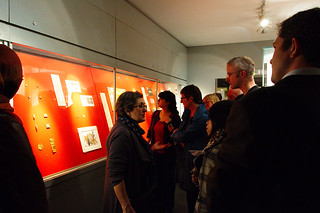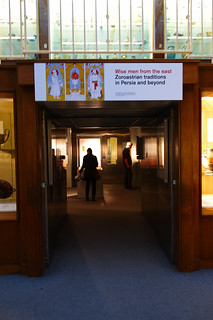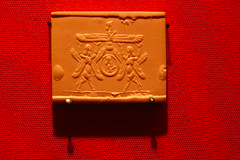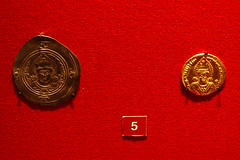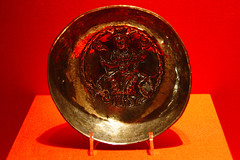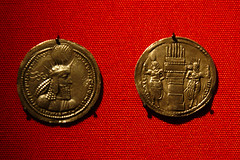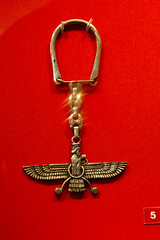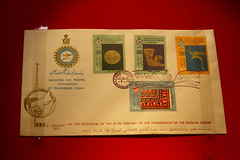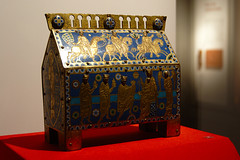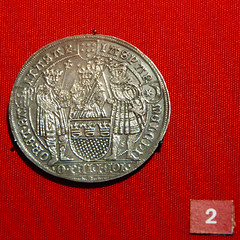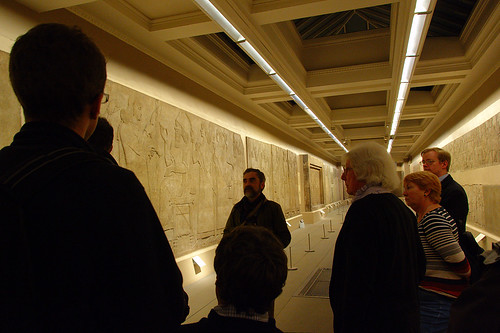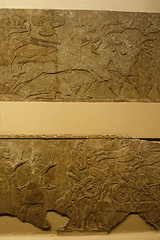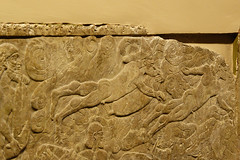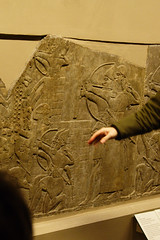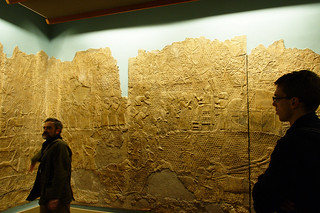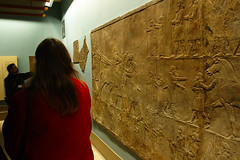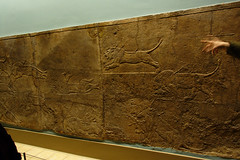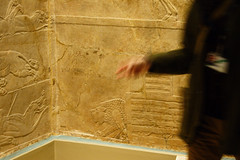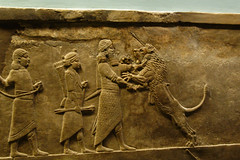She Wolves: England’s Early Queens is a series we’ve had sitting on the PVR for a while now – it’s presented by Helen Castor who has written a book with the same title & premise. She’s looking at the history of seven Queens of England, in medieval & Tudor times. Some of these Queens ruled in their own right, some were wives of Kings but all of them exercised power. The second episode will be about the woman who was actually referred to as a she wolf, none of them were entirely popular with their subjects. Castor’s thesis is that this is all down to the people of that time regarding power as male, so these women were slandered & put down for behaviours that would’ve been regarded as normal for a King. In this series she’s very much presenting the stories from the women’s point of view – J wasn’t so keen on this in the one we watched the other night. He thought she was too partisan, tho I think she was just obvious with her partisanship, everyone’s got biases after all.
The first two-thirds or so of the first episode covered the Empress Matilda who was never crowned, but was very nearly the first woman to rule England in her own right. Her story starts off fairly normally for a woman of the time, she is the daughter of Henry I (and granddaughter of William the Conqueror) born in 1102AD and at the age of 8 she’s married off to Henry V King of Germany and Holy Roman Emperor. She lives in Germany from then until her husband’s death nearly 16 years later when she’s 23. She wasn’t heir to the English throne at first because she had a brother, William. However he died when the ship he was travelling in from Normandy to England ran aground just outside the harbour – Castor told us that everyone on the ship was drunk when they left (it was the Prince & his entourage most of whom were teenagers) and so not paying enough attention. In the cold November water there was no way rescue could get there before they died. With the death of her brother Matilda was now the only legitimate child of Henry I, and as yet she had no children of her own. Once her husband died Henry I married her off again quickly, to try to get grandsons soon enough that they could inherit when he died.
Matilda’s second marriage was to Geoffrey, Count of Anjou. This marriage didn’t go down well with her – it was her father’s choice, both for strategic reasons (the County of Anjou bordered Normandy so was a useful ally to have) and dynastic reasons. But Geoffrey was much younger than Matilda, and very much lower status (she was an Empress after all, he was merely a Count). The couple were estranged quite quickly, but Henry I subsequently enforced a reconciliation that appears to’ve worked out – the couple had two healthy children, and even better both of them were boys.
More than once before his death Henry I had had his nobles swear allegiance to Matilda as his heir. Castor told us that there was no precedent for whether or not a woman could rule the country, as the Norman invasion had effectively reset the clock. If Henry I had managed to live long enough for one of his grandsons to grow up he would probably have named him heir, but he died long before this could happen. When her father died Matilda was in Anjou (and not on good terms with her father) so couldn’t get to England quickly. She did actually set out, but on arrival at one of the castles in Normandy she delayed her journey – this might’ve been due to complications of pregnancy as she was pregnant with her third child at this point. Castor said that a contemporary chronicler just says she remained there “for certain reasons” which is maddeningly opaque.
The delay in Matilda reaching London gave her cousin Stephen of Blois time to seize power. This is where J thought Castor’s biases were most apparent – she presented it as “and of course this worked because Matilda was a woman”, however as J points out if a male heir had delayed that long then someone else might’ve seized power. Power vacuums tend to be filled, after all. It’s just that as Matilda was a woman it was easier for Stephen to rally support to his side.
What followed was 20 years or so of civil war, a period that is called The Anarchy (we listened to an In Our Time episode about it a while ago). Stephen was the anointed King, by virtue of his coronation ceremony, but Matilda was the legitimate heir, by virtue of blood and the oaths sworn to her father. At one point, in 1141, Matilda had the upper hand and had even captured Stephen. She was preparing for her coronation in London, having got the Church and several of the powerful nobles on side. But the chronicler (who was very much on Stephen’s side) writes that she became too arrogant and unwomanly, and so the people of London rose up and chased her out of the city. Again Castor was quite sure that Matilda was only regarded as arrogant because she was a woman, and that the same behaviour in a man would’ve been perfectly fine. It’s hard to tell, tho, as all the chronicles that still exist are on Stephen’s side. Stephen was also freed not long after this, so it was back to square one. In the end Matilda had to give up her ambition to rule in her own right, but she secured the crown for her son Henry as Stephen had no heir.
The last third of the programme was about Matilda’s daughter-in-law, Eleanor of Aquitaine, who never ruled England in her own right but did do the actual ruling of the country for a while as well as have a powerful influence on the politics of the realm at other times. Eleanor was born & brought up in Poitiers, the daughter of the Duke of Aquitaine, and she inherited the Duchy on her father’s death. She was married first to Louis VII, King of France, and this was not a happy marriage. Eleanor pronounced Louis “more monk than man”, but the couple did eventually have two daughters (which wasn’t good enough, as girls definitely couldn’t inherit the Kingdom of France). Louis & Eleanor went on Crusade to the Holy Land as part of the Second Crusade, and during this expedition their marriage broke down almost completely (this is between daughters 1 & 2).
Eleanor’s close friendship with her uncle (the ruler in Antioch) caused scandal, and then to make matters worse when Louis prepared to leave Antioch & move on with the Crusade Eleanor refused to accompany him. She tried to get a divorce from him at this point, citing their relationship to each other (which was within the prohibited seven degrees) – Castor pointed out this was Eleanor trying to use the same sorts of laws that powerful men used to get rid of no longer convenient wives. But unfortunately for Eleanor she didn’t have the same sort of power as a man would and her husband’s desire to remain married trumped her desire for an annulment. The couple were reconciled, at least to a degree that meant that after their return to France they had a second daughter. Not long after this tho they were estranged again, and this time Louis was willing to divorce. 8 weeks later, Eleanor married Henry, son of the Empress Matilda & Geoffrey of Anjou (not yet King Henry II of England). Castor said that Eleanor & Henry must surely have met when Henry visited the French court not long before Eleanor divorced, but there’s no record of this.
So now Eleanor is married to the King of England, and this marriage was initially much more successful. The couple had 8 children over 15 years, with three sons surviving to adulthood. Between his own inheritance & Eleanor’s own lands Henry ruled over a pretty big empire stretching from the Pennines to the Pyrénées. After Henry’s mother’s death (Matilda definitely exercised power via her son after he took the throne) Eleanor became more important in the politics of Henry’s realm. By this time she’s 43, and she lived in Poitiers again ruling the Duchy of Aquitaine in Henry’s name. Unlike her mother-in-law who never got to rule, because Eleanor was ruling in a man’s name she didn’t have the same problems of being regarded as un-womanly. (And possibly she was better at acting in a suitably “feminine” fashion while exercising power.) Castor noted that the sorts of stories that surround Eleanor during this time focus on tales of courtly romance (this is the time & the place for the troubadors), which are suitably feminine subjects even tho there’s no evidence that any of the stories actually happened.
Once Henry II & Eleanor’s sons were teenagers they began to want to share power with their father, but he made promises and never actually delegated any power. It struck us while we were watching this that Henry II probably couldn’t win here – either he delegated power to them, and then they got too powerful & weakened his own rule, or he didn’t and then they got annoyed & rebelled which is what they did. This wasn’t unusual in itself – sons taking up arms against their father – but what was unusual was that Eleanor sided with her sons against her husband. Castor read excerpts from a letter written to Eleanor by a bishop that said she was going to bring about the ruin of all of society due to these actions! The rebellion ultimately ended in victory for Henry II – it seems Eleanor was the brains of the operation and after Henry managed to capture her the rebellion soon ended with the sons begging for mercy.
Henry II was merciful to his sons, but Eleanor lived in captivity for the next 16 years until Henry’s death. One of the first things Richard the Lionheart did when he inherited the throne was send word that his mother should be freed. She’s now about 65, and freeing her wasn’t just an act of filial affection it was a necessity. Richard needed someone to rule the country in his name while he was off on Crusade, and Eleanor was just the person for the job. She ended up holding the reigns of power for longer than anyone anticipated because Richard was captured on his way home from Crusade. She also outlived Richard, and when his younger brother John inherited she was instrumental in smoothing his way to power. She eventually died at the age of around 80, and was buried next to her husband despite their differences in life.
The next programme in the series is going to be about the wives of Edward II (Isabella of France) and Henry VI (Margaret of Anjou) who played pivotal roles in their husbands’ reigns.
The Rijksmuseum in Amsterdam has been shut for 10 years while being refurbished. A Night at the Rijksmuseum was Andrew Graham-Dixon acting a bit like a child in a sweetshop while being allowed to go behind the scenes just before the re-opening of the museum earlier this year. The programme was part about the renovation & the history of the museum, and part about what the contents of the museum are & how they’re organised. So mostly “look at the pretty things” which is always hard to write about.
The original building was built in the 19th Century, designed by a Catholic architect and it reminded me a bit of the V&A Museum in style and a bit of a cathedral. Graham-Dixon said that when it was originally built the resemblance to Catholic religious architecture was a bone of contention for many of the staunchly Protestant Dutch. The new additions have kept a similar sensibility, but with a more modern style (and the architect this time was Spanish which seems about as historically inappropriate as a Catholic amongst Protestants!). The interior of the original building has also been refurbished and restored to its former glory – including parts that were whitewashed over by a particularly modernist director in the 1950s.
The refurbishment was “only” supposed to take a few years, 2 or 3. Apparently the obstacle that caused the biggest slippage in the project time was the bike tunnel. Prior to the museum being shut there was a bike route that ran through a tunnel through the building, and the original plans for the refurbishment altered this route. However people objected, petitions were organised etc etc – but somehow this wasn’t discovered to be a problem till after the plans were finalised and work had begun. So the architect had to re-design that part of the building and that cost significant amounts of time & money.
While it was shut the curators not only had the chance to completely overhaul their vision of how the collection should be displayed, but also to do conservation & research on the paintings & other objects. In a particularly overenthusiastic segment of the programme Graham-Dixon was shown the work they are & have done on X-raying & 3D-imaging of the paintings in the collection. It was kinda neat, but I didn’t really understand the levels of excitement over being able to see the brush strokes more clearly. That was the 3D-imaging, the X-ray stuff was more obviously exciting to this non-artist because you could see how the composition of a painting had changed while it was being worked on.
The objects used to be organised by type, but the new layout organises them by date. There are 8 main galleries which each cover a hundred years of Dutch history. So you have the paintings and the objects all mixed in together. It being Holland there’s a lot of maritime related stuff – paintings of ships, models of ships, cannon from ships … even the English Royal Coat of Arms from the prow of a ship the Dutch captured from us in Charles II’s time. And there’s also another wing of the museum with Asian related objects – the Dutch have traded with the Far East for several centuries, in particular they were the only Western nation allowed to trade in Japan during the Sakoku Period.
This was a fun programme to watch, but it did feel awfully like a piece of advertising for the Rijksmuseum. Kinda did the trick, I’d quite like to go to it some day, but a bit odd as a BBC programme.
Little Cat Diaries was a half-hour follow up to the previous Horizon programme The Secret Life of the Cat (post). It went into a little bit more depth about 4 of the cats that were in the first programme. As it was only half an hour this still wasn’t terribly much depth on each! There was a bit about the cat that was the best hunter (the family don’t really feed him much cat food because he eats so much of the wildlife), there was a bit about the cat that roamed furthest (his family said it was a bit like being at a parent/teacher evening & being told your child did well). And a bit about a stray cat who was spotted in people’s houses when they were filming their own cats (and he was subsequently captured & re-homed with one of the households he was visiting).
The bit that was most interesting for me was the short segment on whether one’s cat returns one’s affection. They set this up by talking to the previous & current owners of a cat that had run away – the previous owner said something along the lines of “as she got older the cat seemed to get less keen on the children, but when I got the dog it was the last straw. The cat walked in, saw the dog, the dog started to go for her and she left and never came back!”. I was left thinking that there are ways to integrate pets into a household, and that was Not It 😉 However the interesting bit was that there is research being done on whether cats are attached to their owners. This is based on a 70s experiment that shows that babies are attached to their mothers – if the mother leaves the room while a baby is being distracted by a stranger the baby is concerned, and obviously pleased to see the mother return. If you do the same experiment with a dog & its owner, the same is true. Cats however don’t get nearly as bothered by either absence or return of their owner. Of course that doesn’t actually test if a cat loves its owner, just that a cat doesn’t associate their owner with security in the way a dog does (or a baby does its mother). But still, interesting 🙂
